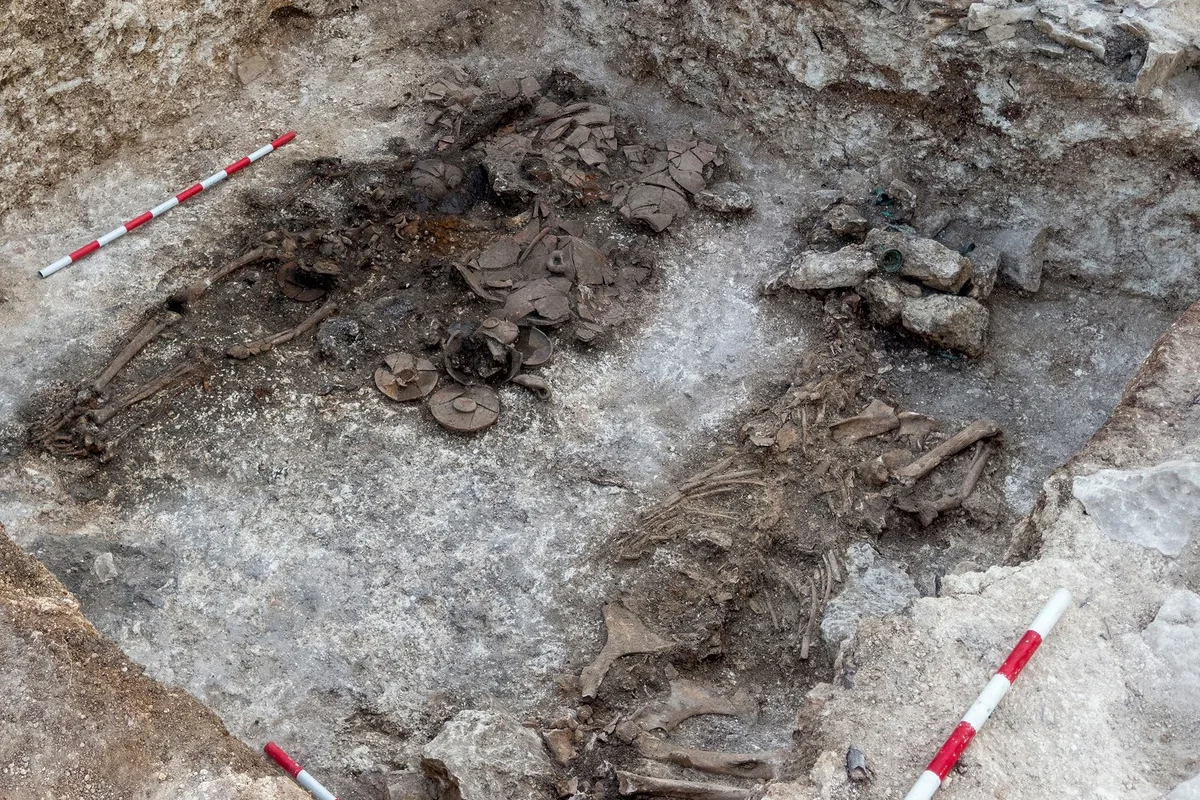A Thracian warrior tomb has been discovered in Bulgaria’s Topolovgrad region, which archaeologists have described as the country’s richest example from the Hellenistic-era.
The Thracians were an Indo-European people that emerged during the early Bronze Age. During the Macedonian Wars, the Thracians came into conflict with the Roman Republic and were annexed into a permanent Roman client state.
Thracians often served in the Roman auxiliary forces as non-citizen troops, particularly favoured in cavalry and light infantry roles. After completing their term of service, Thracian soldiers were settled in Roman colonies or granted land, further integrating into Roman society.

The tomb was unearthed by the Bulgarian Academy of Sciences near the village of Kapitan Petko Voivoda in preparation for the laying of a new power cable. Excavations revealed a well-preserved burial mound containing the tomb of a high-status warrior or local ruler from the 2nd century BC.
The skeletal remains were found alongside a war horse, as well as ornate grave goods consisting of a silver-gilt wreath (a symbol of honour and leadership in Thracian culture), a silver bracelet, a ring, a finely crafted fibula, and a Greek makhaira curved blade with a gold inlaid handle set with gemstones.


Indicating the value horses played in Thracian society, the war horse was found dressed with medallions of gold, silver, and bronze, depicting mythological scenes such as Hercules wrestling the giant Antaeus.
“This is the second consecutive year that the land around Kapitan Petko Voivoda has revealed extraordinary archaeological treasures,” said a representative from the Bulgarian Academy of Sciences. “The ongoing excavations are not only enriching our understanding of Thracian culture but also raising new questions about the intersection of local traditions and Roman influence.”
Header Image Credit : Bulgarian Academy of Sciences
Sources : Topolovgrad Municipality

